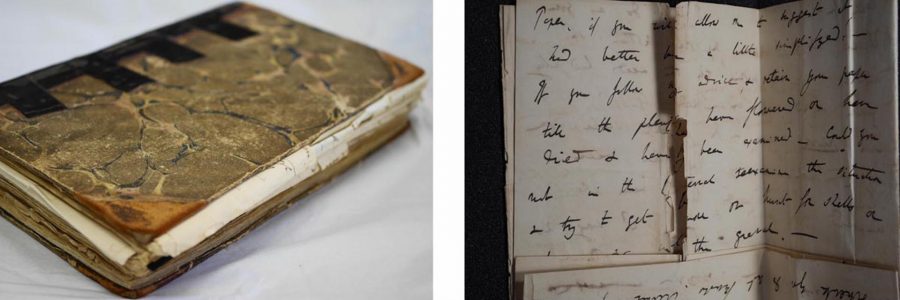
Conservation of a Bound Volume of Letters from the Darwin Archive
This volume was kindly donated to the Library in 2018 and comprises 80 letters all of which were sent to William Kemp, an amateur geologist, in the mid-19th Century. Twelve of the letters are from Darwin himself, which sit alongside letters from other eminent geologists and researchers of the time. The letters were originally loose but were bound together in the latter half of the 19th Century.
When the volume first arrived at the UL, it was in the form of a tight back binding with leather on the spine and board corners and marbled paper on the boards. Over the years (between being bound and arriving at the UL) the leather at the joints had failed and so the spine area had been repaired with electrical tape to hold it all together (as can be seen in figure 1). In terms of the text block, 79 of the 81 letters had been tipped together in groups with animal glue along their folded edge, to make gatherings, which were then sewn together and the cover put on. Many of the letters had their edges trimmed to make them all a uniform size, while other larger ones (all from Darwin) were folded multiple times, which led to extensive mechanical damage over years of use (see figure 2). The last letter in the volume (number 80) was added at a later date, after binding, and was adhered to the back fly leaf. At the very front, attached to the board, is an additional item (number 81), which is a newspaper cutting of a letter from William Kemp to the Fife Sentinel.
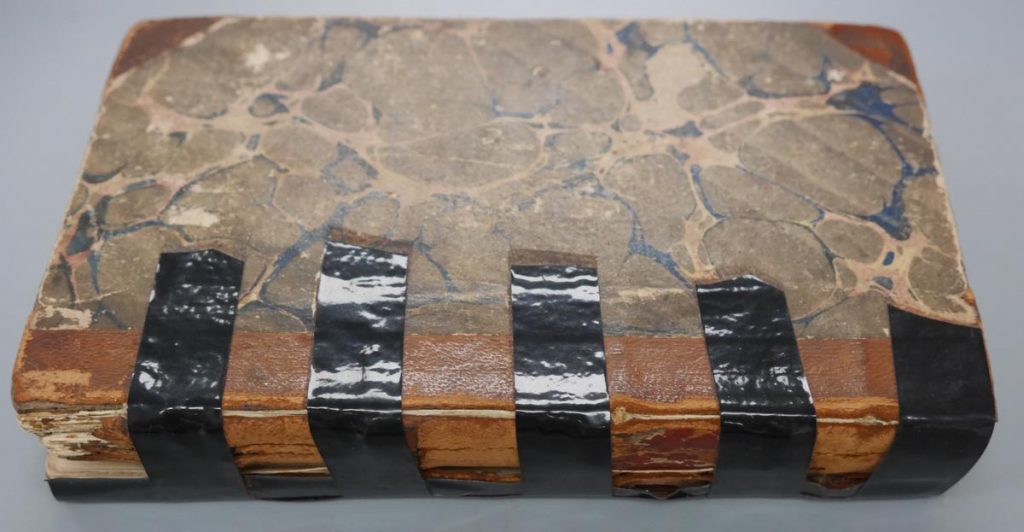
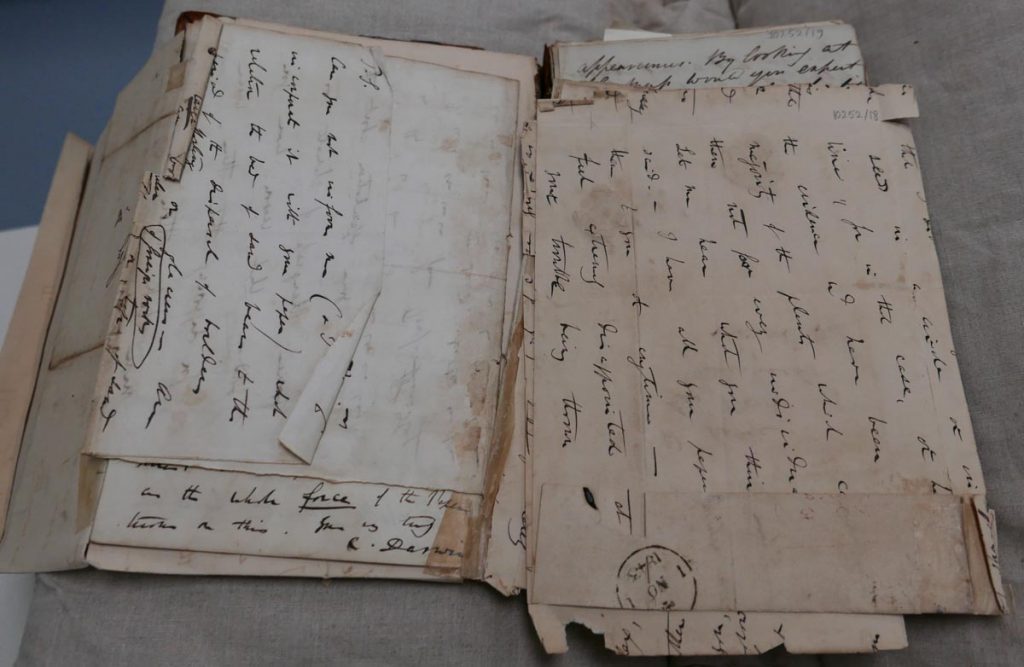
Work on this volume was carried out in two stages: conservation was started in 2019, but had to be paused while the Library was closed due to COVID-19. The project was then re-started in 2021 by the new Darwin Senior Conservator, Rachael Smither. The work carried out in 2019 included removal of the boards, removal of the spine leather, separation of some of the letters using local humidification and some paper repair to two of the letters. When Rachael received the volume to carry on the work, it had been rehoused (in its disbound format) with each letter (or bundle of adhered letters) in a fold of archival paper along with sewing thread remnants, spine leather, and loose letter fragments in acid-free tissue packages. The boards, complete with electrical tape, were also in a fold of paper at the back.
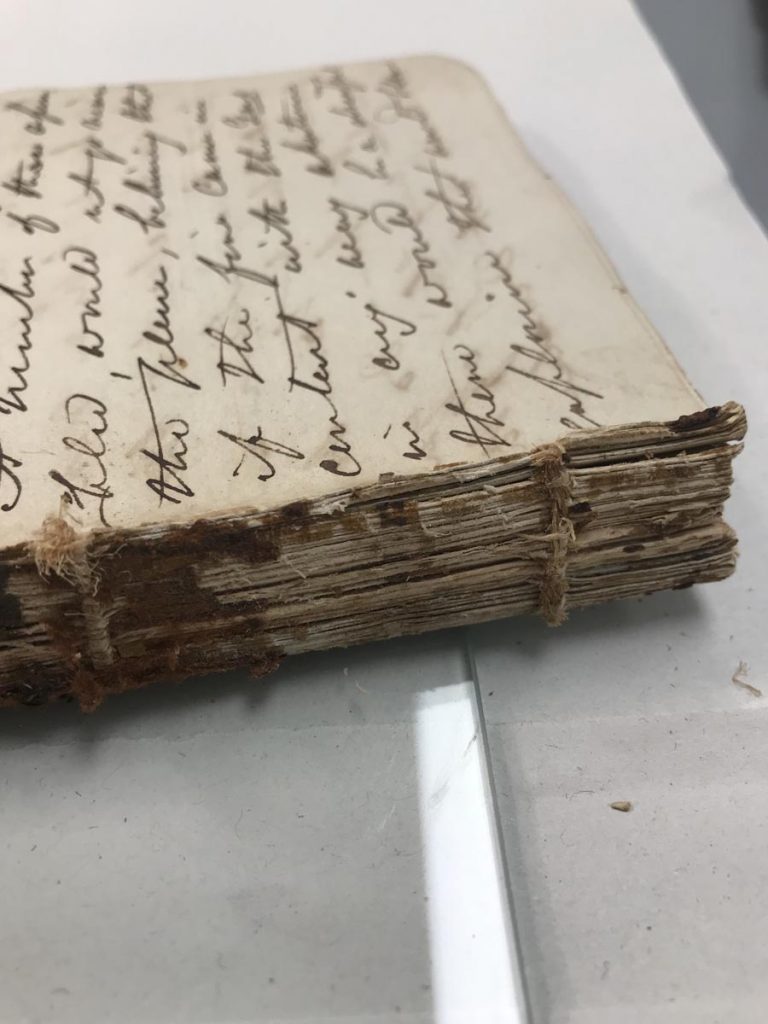
Most of the letters are written in iron gall ink, which frequently contains an excess of transition metal ions. In humid conditions these can easily be transported from the inked areas into non-inked areas of paper, along with sulphuric acid, and cause widespread degradation of the paper support and – in advanced cases – complete loss of manuscript text.
Rachael reassessed the volume in its current format and from this was able to group the letters in terms of the type of treatment they required. The aim was to keep treatment to a minimum where possible and focus on the letters that were at risk of further damage if left untreated. The letters fell into two groups; those that just needed repair work and those that needed separating prior to repair. Within the group requiring separation, there were two subgroups; those that could be separated safely through localised humidification of the adhesive and those that would require immersion in a bath to separate them.
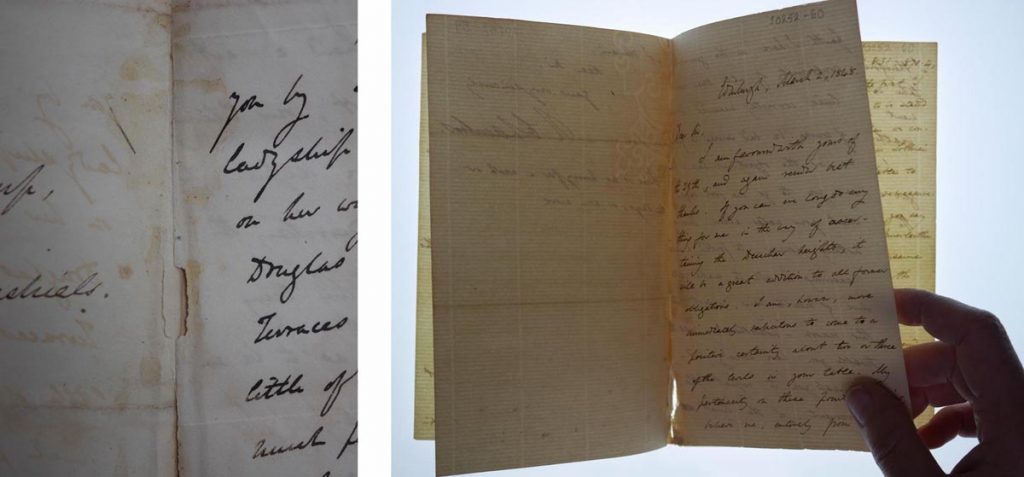
It was found that twelve letters (or bundles of letters) required separation and of these, six would require bathing to do so, due to a risk of the inks being exposed to moisture: if bathed, both the transition metal ions and sulphuric acid would be washed out, so reducing the risk of them spreading to stable areas of paper. Twenty-five letters would need repair work alone.
Letter 80, adhered to the volume fly leaf, was included in the bathing group as, although it was stable and not at risk from damage, there was a faint pencil inscription on the verso which was partially hidden where it was adhered (see figures 6 and 7 below).
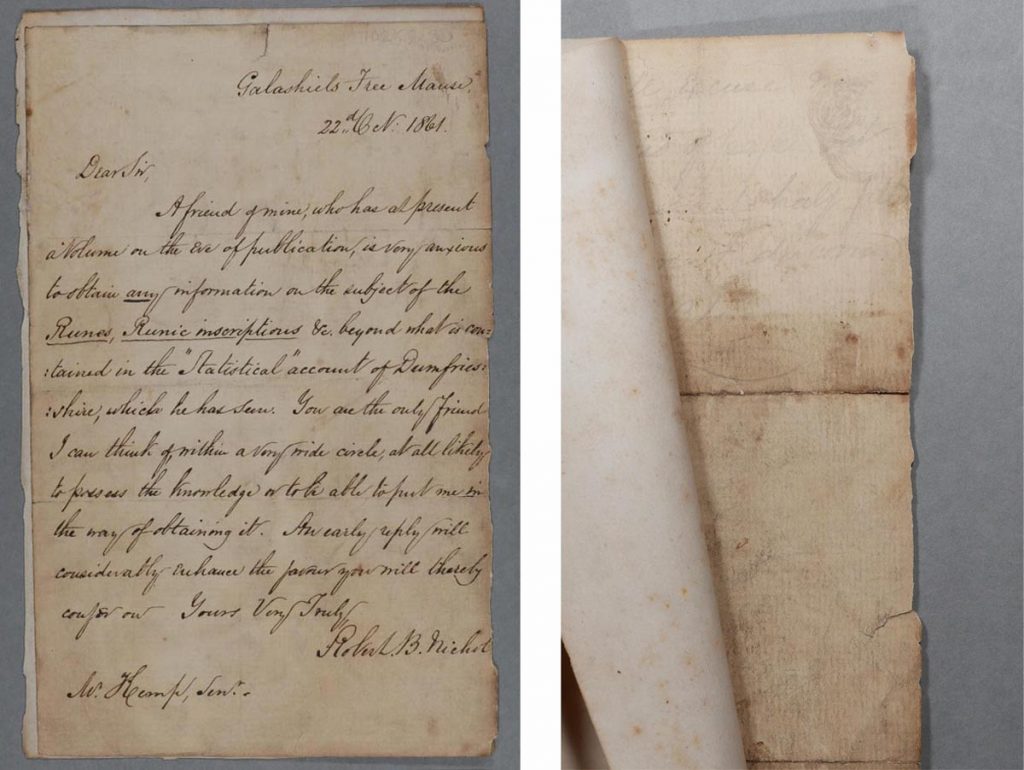
Separating the adhered letters
For the letters that could be separated with humidification applied locally on the adhered areas, three methods were used: the first was Agarose gel (made from sea kelp!); the second was with damp blotters on Sympatex (a waterproof but vapour-permeable membrane); the third was warm steam. The first two were used as much as possible as they were both methods where it was easy to control where the moisture went. The third was more useful for items where the adhesive was heavier and there was no next near the adhered area.
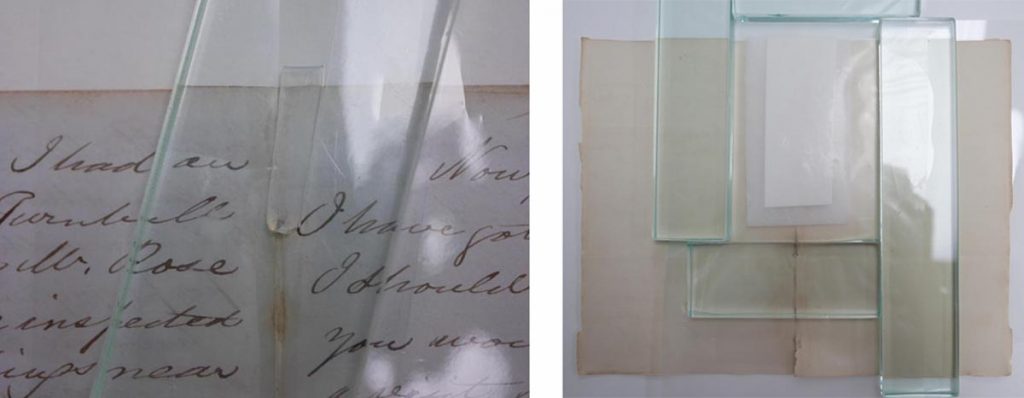
The six letters that required full immersion in a bath were first tested for ink fugitivity in water and mixtures of water and ethanol. Five of the letters showed no signs of ink solubility in water so were fine to proceed with the treatment. The treatment steps were as follows:
- Letters preconditioned with a 50/50 mixture of ethanol and water sprayed on with a Dahlia spray.
- The bath water was tap water brought in from home and tested for dissolved copper or iron. Three of the letters had some fragile areas and so were placed on a screen whilst in the bath, the other two were just supported with a non-woven polyester fabric (Bondina). The letters had three baths; the first two were with cold water and the third was with water warmed to 35oC – this was an important step as it further softened the adhesive and made separating the letters easier. See figures 10 – 12 below.
- After the washing treatments – and further testing to ensure that metal ions had been washed away – the letters were then deacidified in a saturated calcium bicarbonate solution.
- The letters were then partially air dried before being brush sized with a 2% bovine gelatine solution. One letter (number 65) that was particularly fragile was at this point also lined with a very light weight Japanese tissue during sizing.
- The letters were dried between felts.
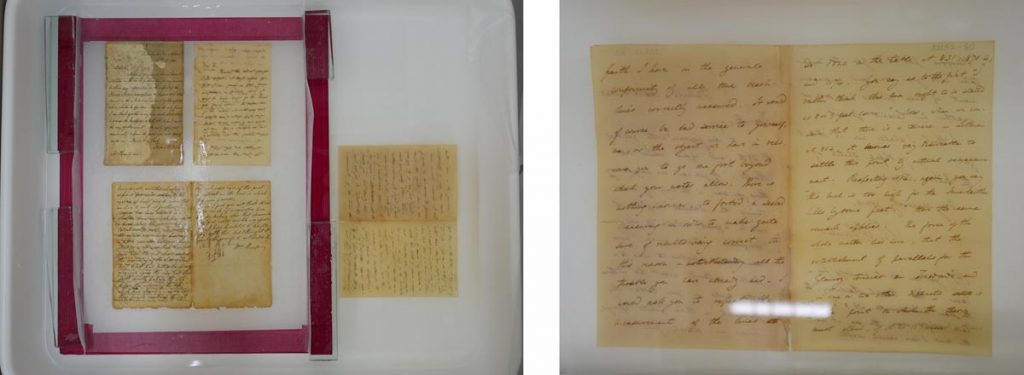

Only one of the letters (19) showed signs of ink fugitivity in water during initial testing, and so this letter was washed separately. The letter had a fragment of another (18 – a Darwin letter!) adhered to it and so needed bathing to facilitate its safe removal. The ink proved to be less fugitive in ethanol/ water mixtures and so an ethanol modified washing treatment was used. The process follows the same steps as used for the first five letters, but the letter is preconditioned with 100% ethanol absolute before going into baths with gradually decreasing amounts of ethanol; the first bath was 75% ethanol and 25% water; the second bath was 50% ethanol and 50% water; the third bath was 25% ethanol and 75% water. Starting with a high ratio of alcohol to water and gradually reducing it has been shown to reduce some inks’ sensitivity to water. It had one final bath in just pure tap water. By this point the adhesive had softened enough for the adhered areas to be separated. The treatment of this letter then followed steps 3 – 5, as had been carried out with the others.
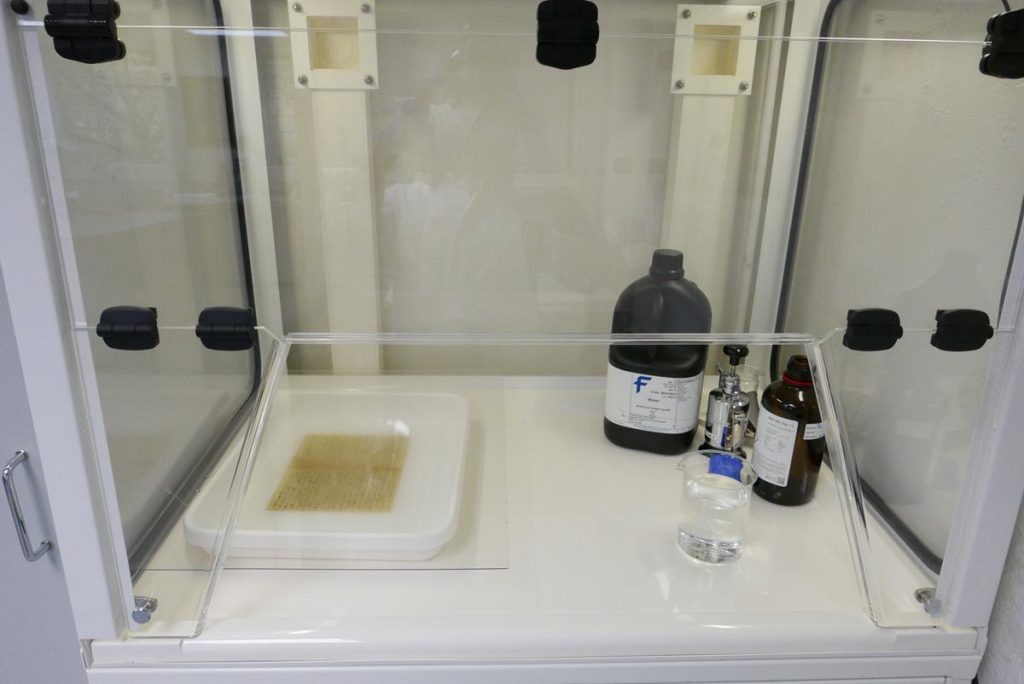
Fig. 13. Ethanol modified washing of letter 18/19 in the fume cupboard
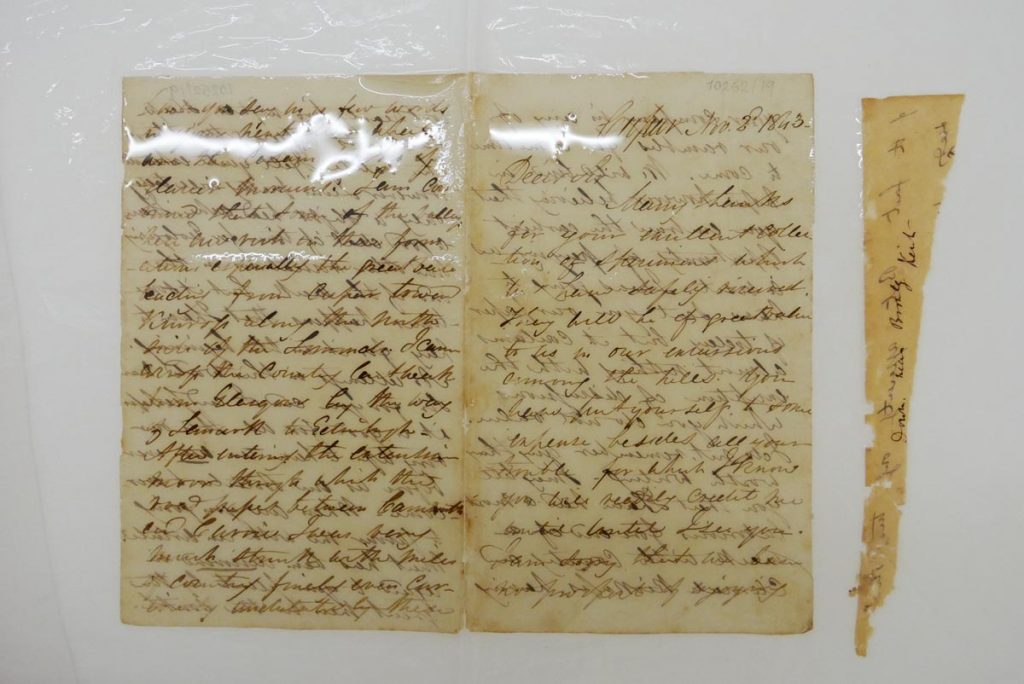
Repairs
34 of the letters required repair with Japanese Kozo fibre tissues, which are well-used in conservation, due to their incredible strength but lightness in weight and good aging properties. For the letters that had been washed, the tissue could be adhered with wheat starch paste, as the moisture sensitive transition metal ions and sulphuric acid had been removed. For the letters that had not been washed, if covering areas of text could not be avoided then Type-B gelatine mousse was used, both to minimise moisture and to make use of some useful stabilising properties that have been observed in interactions between Type-B gelatine and iron-gall ink.
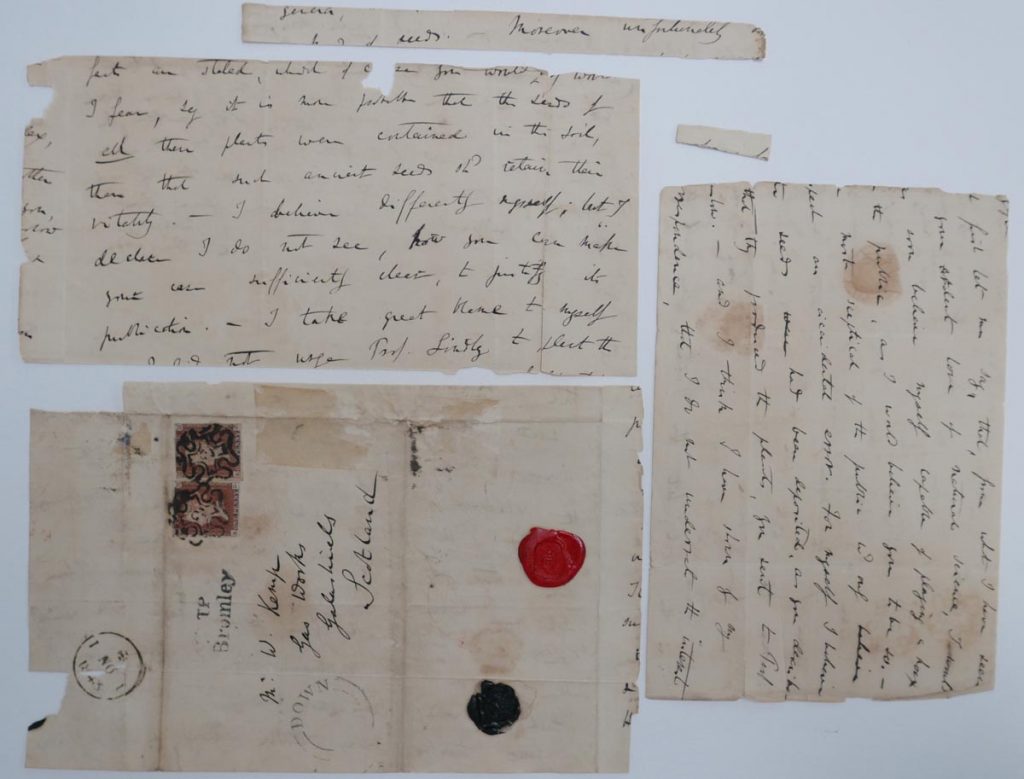

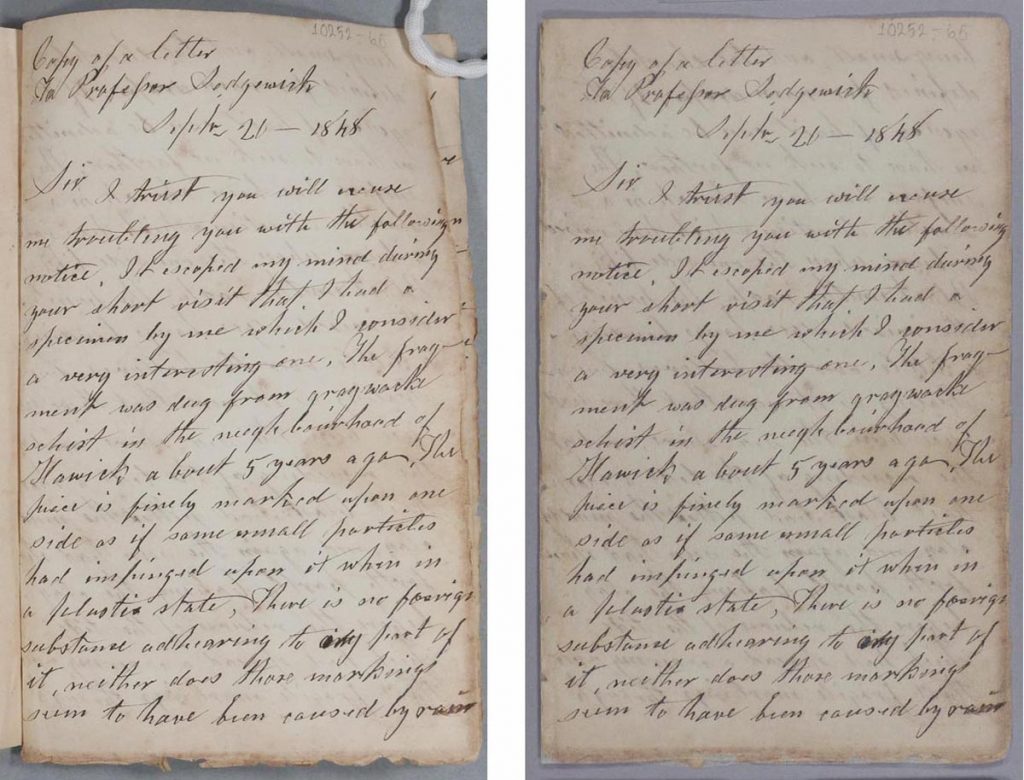
The letters are now all in a fit state to be digitised. Once digitisation is complete, they can be rebound and so returned to their original format, albeit one that offers better protection to the letters!
Darwin Exhibitions
One of the bundles of letters (31-35) from this volume will feature in the upcoming Darwin exhibition at CUL as this bundle contains a Darwin letter (number 34). The exhibition is then due to travel to New York in 2023.
